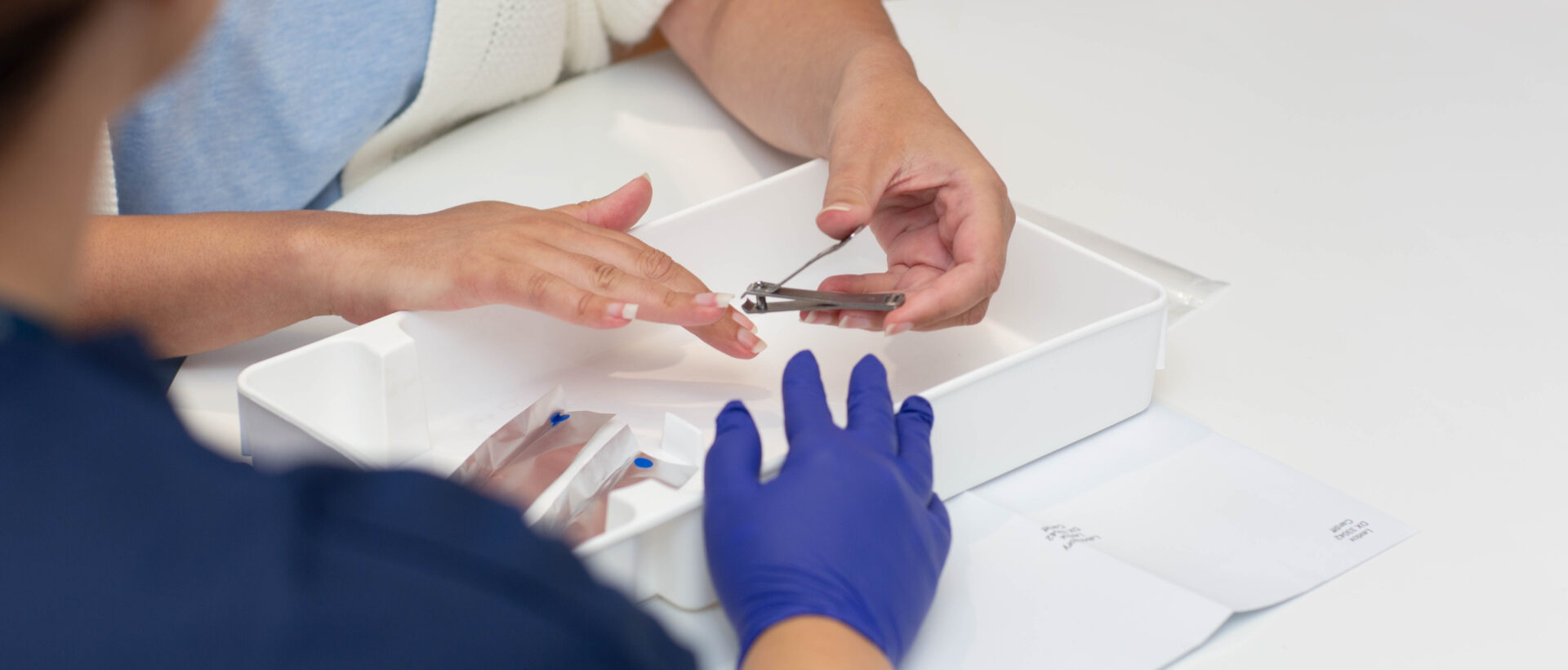
By Angharad John, Reporting Scientist Team Manager
What Does A Nail Drug Test Show?
This form of testing will benefit those who are looking to understand drug intake within a short period of time.
As such, when testing is needed to evidence historical drug use, hair testing is considered the test of choice. This is because hair testing can go back many months.
However, in some cases a donor may not have any hair, or a donor may be apprehensive about having a hair sample collected and may therefore decline permission to provide such a sample. In cases such as these, fingernail or toenail drug testing can be helpful.
What is it?
Nail is a keratinous matrix like hair, and much the same way as drugs can be incorporated into hair following drug use, they can also be incorporated into nails. As such, a nail drug test can also be used to test for evidence of historic drug use.
As with all forms of drug testing, there are some considerations; firstly, nail testing can only provide an overview analysis (6 months for finger nails and 12 -18 months for toe nails) and cannot be broken down into monthly sections.
Secondly, as only one alcohol marker is tested in nails*, it is always recommended that nail testing for alcohol is supplemented by blood testing such as phosphatidylethanol (PEth).
Nail drug testing is a useful alternative when testing for historical use is required and hair testing is not an option. This makes it valuable in situations where a hair sample cannot be collected, such as when a donor has insufficient hair or declines for religious reasons.

How does a nail drug test work?
When drugs are consumed, the body breaks them down into metabolites, which then circulate through the bloodstream.
As nails grow, these substances become embedded within the keratin structure of the nail from the nail bed upward. This incorporation allows laboratories to detect a historical record of drug use, making nail testing for alcohol and drugs a valuable method for long-term substance use detection.
Sample requirements and considerations
Only fingernail clippings or toenail clippings can be used for testing, never a combination of both. This is due to the difference in growth rates, with fingernails providing an approximate six-month detection window and toenails offering a longer, 12-month overview.
The length of the nail also determines the number of samples needed: if the nail is 5mm or longer, a single clipping may suffice, while shorter nails typically require several clippings from different fingers or toes.
It’s also essential that any artificial nail products, such as gels, acrylics, polish, or extensions, are completely removed prior to sample collection, as these can interfere with the accuracy of the results.

Dependable results
However, there are also many positives; the testing is undertaken in the same way as with hair, providing accurate, dependable results.
In addition, Lextox are able to undertake testing on both fingernails and toenails and can undertake testing for the same range of drugs as we offer for hair.
In addition, Lextox also provide alcohol nail testing for evidence of alcohol consumption. Furthermore, the collection of nails is not invasive, and the donor is able to clip their own nails for collection under the guidance of a Lextox collector.
Nail alcohol testing and nail drug testing is therefore a useful alternative to hair testing when testing for historical use is required and hair testing is not an option.

How we can help
At Lextox, we offer dependable nail drug and alcohol testing to provide a long term insight into substance use.
With direct access to expert toxicologists and dedicated case management from start to finish, our nail testing offers a practical solution which meets a wide range of testing needs.
Contact us today to find out more.
*When utilising nail test for alcohol, nails are not tested for the alcohol marker EtPa as this can be elevated in nails when products containing alcohol (ethanol), such as hand creams and hand sanitisers, are used on the hands.
By Angharad John
Reporting Scientist Team Manager
Angharad has over 20 years’ experience in drug analysis and, for almost 15 years, has specialised in the examination of hair samples for drugs and metabolites and alcohol markers. Angharad regularly provides advice and result clarification to clients. In addition, having successfully completed training as an ‘Expert Witness’, Angharad has attended Family, Crown and the High court to provide expert evidence during her career. Angharad has a Bachelor of Science degree with Honours in Forensic Science and a Postgraduate Certificate in Medical Toxicology. She is additionally a member of the Society of Hair Testing (SoHT), The International Association of Forensic Toxicologists (TIAFT) and LTG (formerly the London Toxicology Group), and is a professional member of The Chartered Society of Forensic Sciences (MCSFS).

Published 30/11/23 – All information correct at time of publication





